The 1 "dome tweeter is made of a special fabric material and has additional magnetic shielding for high-quality transmission of high frequencies without distortion. The tweeter also includes a metal grid to protect it from accidental deformation.
Inclusion indicators in the form of a proprietary Yamaha logo shine too bright - somewhat annoying in the dark.
The Yamaha HS5 series are great universal studio monitors, which are able to perfectly express themselves in various tasks - equipping a home studio, writing and post-processing music on a computer, sounding for synthesizers and much more. One of the best models in this price segment!
2 x amplified studio monitors
2-way: 5" Cone woofer and 1" dome tweeter
2 x 70 W
54 Hz - 30 kHz
Volume control, Room Control Switch, High Trim Switch
XLR connector (balanced), TRS phone connector (balanced) in each monitor
Low Resonance Enclosure Design, Noise Reduction Technology
6.7" x 8.7" x 11.2"
11.7 lbs
1 year
The case is made of durable MDF and has Black Vinyl Wrap Finish - this not only gives the monitors a stylish appearance, but also acts as an important advantage in terms of reliability. Foam cushion inside provides insulation for the sound emitters.
Power-saving feature is very annoying (auto shutting-off after 30 mins of use).
KRK studio speakers have an amazing frequency range that ranges from 45 Hz to 35 kHz, so they will exactly satisfy the requirements of audiophiles and sound directors: all musical instruments will be played in these monitors just as they sound live.
2 x amplified studio monitors
2-way: 5" Cone woofer and 1" dome tweeter
2 x 50 W
45 Hz - 35 kHz
Volume control, HF Level knob, LF Level knob
XLR connector (balanced), TRS phone connector (balanced), RCA (unbalanced) connector in each monitor
Radiused Front Baffle, Proprietary Waveguide Optimisation, Front-firing Bass Port
7.3" x 9.1" x 11.1"
14.1 lbs
3 years
Behind the speakers are not only the Volume Level knob, but also HF and Boundary EQ switches, which allow you to achieve optimum sound quality. A + 4dBu / "minus" 10dBV input sensitivity switch allows you to compensate for the error resistance of the cable.
The frontal insert of glossy plastic is impractical (the shiny surface collects dust like a magnet).
JBL knows a lot about creating top speakers, and therefore everything with this monitor is performed at the highest level: a double amplifier can deliver a maximum power of 82 W (41 +41 W). And each copy passes a Strenuous 100-hour full-power test, as a guarantee of reliability.
1 x amplified studio monitor
2-way: 5" Cone woofer and 1" dome tweeter
82 W
43 Hz – 24 kHz
Volume control, Input Senitivity Switch, Boundary EQ Switch, High Trim Switch
XLR connector (balanced), TRS phone connector (balanced)
Patented Image Control Waveguide, Slip Stream™ low-frequency port, JBL Linear Spatial Reference design
7.3" x 9.9" x 11.75"
10.4 lbs
5 years (2 years on enclosure)
Front-loaded Bass Reflex System is equipped with special Grooves on the ducts, which significantly reduce air friction. Add to this the 4 "Fiberglass woofers and you get really rich bass, along with a fully accurate sound reproduction.
There is no possibility of adjusting the HF and / or LF on the columns.
These studio monitors have received a lot of positive feedback from well-known DJs, as they allow mixing and recording mixes without too much difficulty. The presence of popular connectors makes them compatible with almost any DJ Controllers.
2 x studio monitors (1 x amplified)
2-way: 4" Cone woofer and 0.75" dome tweeter
2 x 21 W
70 Hz - 30 kHz
Volume control
2 x RCA connectors (unbalanced), Mini-jack connector in one monitor
Front-loaded Bass Reflex System
5.7" x 8.7" (8.3") x 8.9"
Left: 6 lbs, Right: 4.8 lbs
1 year
On the front panel of the active monitor is a headphone output - especially useful when used with a PC. It also has a linear AUX-in input, through which you can transfer stereo sound from portable devices (players, smartphones, etc.)
Relatively low frequency range.
This budget active speaker system is designed for people who are just mastering the complex and fascinating process of recording and are looking for good monitors to get clear sound. They can also be used as computer speakers, as listening to music and watching movies with them is a pleasure.
2 x studio monitors (1 x amplified)
2-way: 3.5" Cone woofer and 1" dome tweeter
2 x 25 W
80 Hz - 20 kHz
Volume control, HF Level knob, LF Level knob
2 x TRS phone connectors (balanced), 2 x RCA connectors (unbalanced), Headphones out and AUX-in in one monitor
Rear-firing acoustic port, Optimized resonance-suppressing internal bracing
5.6" x 6.4" x 8.3"
Left: 3.9 lbs, Right: 2.5 lbs
1 year
This site is a free online resource that strives to offer helpful content and comparison features to its visitors. Please be advised that the operator of this site accepts advertising compensation from certain companies that appear on the site, and such compensation impacts the location and order in which the companies (and/or their products) are presented, and in some cases may also impact the scoring that is assigned to them. The scoring that appears on this site is determined by the site operator in its sole discretion, and should NOT be relied upon for accuracy purposes. In fact, Company/product listings on this page DO NOT imply endorsement by the site operator. Except as expressly set forth in our Terms of Use, all representations and warranties regarding the information presented on this page are disclaimed. The information which appears on this site is subject to change at any time. More info
Yamaha HS5
Highly Accurate
Yamaha has been in the business of making studio monitors for decades, and they have always held a reputation regarding the faithful sound reproduction of their products. Instead of laying in extra bass or treble to produce a flattering sound, like some models do, their speaker monitors are engineered to be as close to the source audio as possible. This has made them a favorite with many studio engineers and musicians alike over the years, and this trend continues to the present day.
The Yamaha HS5 Powered Studio Monitor pair continues this long tradition of highly accurate sound reproduction. This studio monitor kit features two-way bass reflex bi-amplified nearfield studio monitors that come with a 5-inch cone woofer and one inch dome tweeter, which reproduces audio in a highly accurate manner, featuring extreme clarity with a high frequency range. The high performance 70W amplifier features a wide frequency response range of 54Hz-30kHz, giving you the full spectrum of sound without worries of missing sounds, regardless of how high or low the source audio is. The sonic purity offered by these monitors shows exactly why Yamaha has maintained such a great reputation in the audio world.
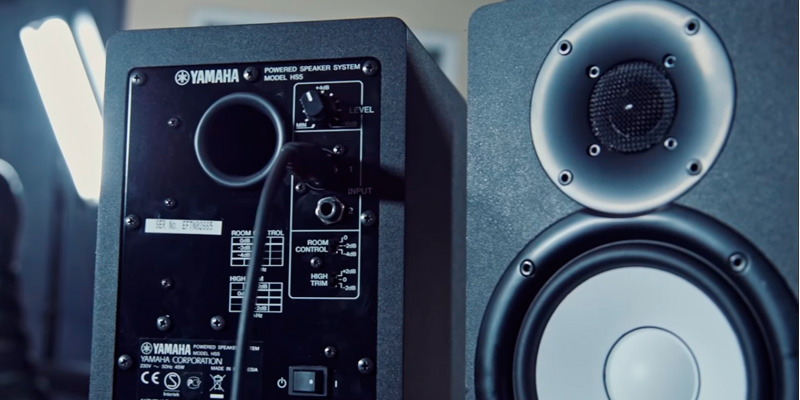
An Industry Standard
The high clarity and accuracy of Yamaha's studio monitors has made them an industry standard, but their products are not simply limited to accurate sound reproduction. This studio monitor pair also features plenty of extras that help make these an absolutely necessity for any serious audio engineer. The monitor pair features newly developed transducers that help bring high accuracy that has rarely been achieved before. The low-resonance enclosure design combined with the cutting edge noise reduction removes unwanted resonance and noise, and helps maintain the high accuracy of the sound reproduction, regardless of the volume used.
The monitors include two response controls for both Room Control and High Trim, giving you full control over the audio output. The monitors include connections for the industry standard XLR and TLS connectors, ensuring maximum compatibility with any studio setup. There are even installation versions of these monitors available, that let you install them in any recording studio setup, letting you create the ultimate in highly accurate sound reproduction for your studio needs. Anyone needing the best in sound accuracy will be remiss in not choosing this monitor pair.
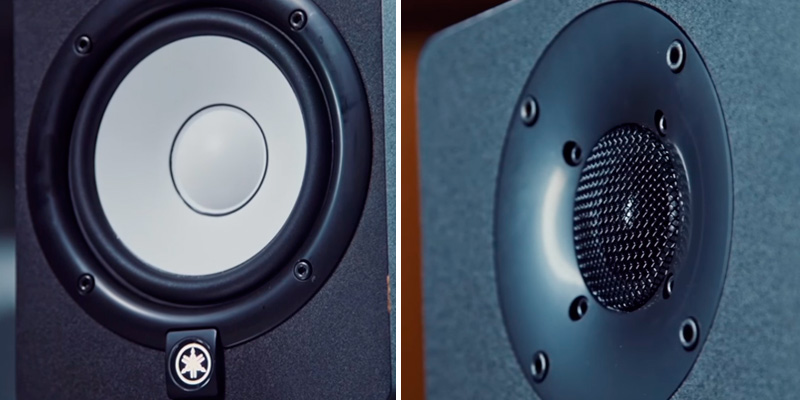
Additional Info
| Last updated price | $0.00 |
| Stock | May be out of stock |
| ASIN | B075Q5T7Q1 |
What customers say about this product
Key Specs
Size & Weight
Audio
Features
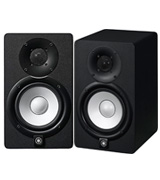
KRK Rokit 5 (RP5G3-NA)
Ideal Sound
Although studio monitors are generally meant for use in a studio, many audiophiles prefer to use them as home speakers due to their highly accurate sound reproduction. Granted, studio monitors are generally not priced for home use, as they tend to be much more expensive than regular home stereo speakers of the same size, but to audio lovers, there simply is no contest between the two. Studio monitors always have superior sound quality, with audio reproduction that is as faithful as possible to the source.
The KRK Rokit 5 Powered Studio Monitor is one such studio monitor pair that has captured the imagination of audio engineers and audiophiles alike. This studio monitor kit features a pair of Generation 3 studio monitors, ideal for a full stereo sound setup, whether it is in a recording studio or in the living room. The monitors are powered by a bi-amped class A/B amplifier that offers a large amount of headroom along with low distortion, leading to a high sound clarity that simply can't be touched by regular home speakers. The faithful sound reproduction of this model also leaves many of its competitors in the dust with its soft dome tweeter, which provides a high frequency response of up to 35Khz.
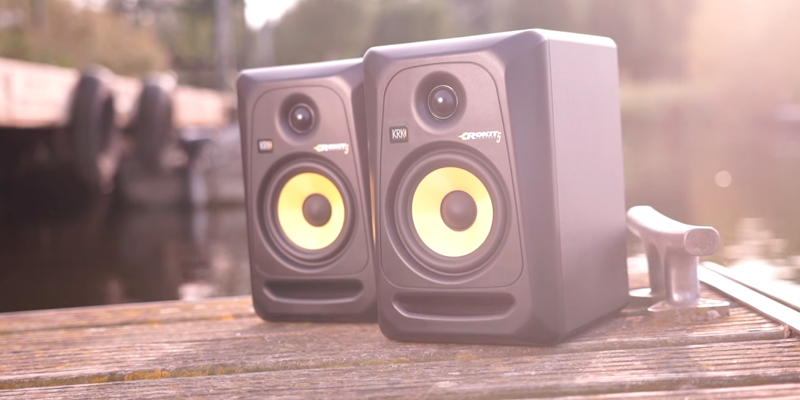
Customize Your Audio
The high audio clarity and frequency response is hardly all that this studio monitor pair has to offer. The monitor casing is made of MDF and has a black wrap vinyl finish, giving them a cool, sleek look while also maintaining their durability. The inside of the case features foam cushioning that helps insulate the speakers from outside interference, namely from reverberation that would affect the quality of the speakers. This helps ensure that all sound reproduction through both the bass and tweeter maintain high accuracy.
The monitor pair features several controls on the back, including those for volume, HF and LF level adjust, and power. The HF and LF level adjust let you adjust the sound for both levels to your personal taste, giving you plenty of flexibility in tailoring the exact sound reproduction through the monitor. The power switch is located on the back, which may not be the most convenient spot, but there should rarely be a need to turn the speakers off, as they feature a power saving mode that automatically cuts power consumption to a bare minimum after 30 minutes of inactivity. All of these features combined with the high accuracy and customizing abilities give these studio speakers excellent marks all around.
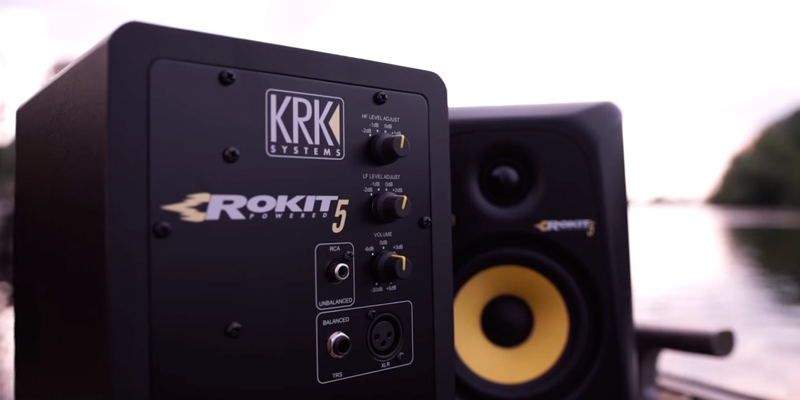
Additional Info
| Last updated price | $299.00 |
| Stock | In stock |
| ASIN | B00FX7MMRO |
What customers say about this product
Key Specs
Size & Weight
Audio
Features
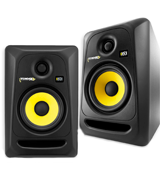
JBL 305PMKII
Trusted Name in Audio
Many audiophiles, musicians, and audio engineers all have their own particular favorite brands when it comes to their audio equipment. One of the manufacturers that has earned high marks from many of them is JBL, long known for creating high-quality world renowned audio equipment. JBL has made a name for themselves in many different sectors of the audio market, and the market for great quality studio monitors is no exception.
The JBL 305PMKII 5" Professional Studio Monitor carries JBL's reputation and only makes it stronger. This 5-inch studio monitor actually packs a lot of punch for a speaker of its size, delivering 82 watts of total power through its integrated Class D amplifier. The speaker features a sleek, modern design that lends itself well to virtually any setting, whether it be in the living room or studio. The casing is also thoroughly shielded from virtually any type of interference, whether it be magnetic, electrical, or even through soundwaves causing reverberation, ensuring that the monitor is always delivering crytstal clear, highly accurate sound. It is even fully approved for use around magnetically sensitive equipment, making it usable in any situation.
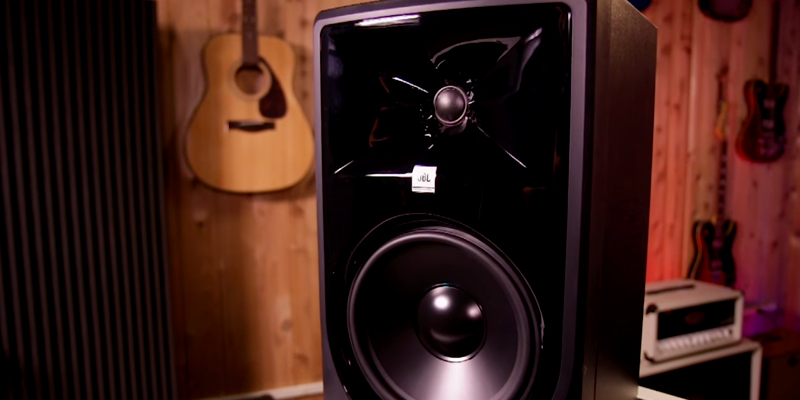
Reliable and Accurate
This JBL studio monitor truly excels with any type of audio that you throw at it, whether it be screeching high trebles or low, booming bass. The latter is particularly effective thanks to its low frequency transducers, which result in great low-frequency linearity, with a great frequency response and almost no harmonic distortion. The woofer itself is also double-flared, providing great low frequency extension with almost no turbulence, ensuring a deep, resonant, yet accurate bass sound. The tweeter is also perfectly engineered, giving exceptional depth and ambiance in the sound and ensuring that every small audio detail from the source is reproduced.
This studio monitor provides a highly flexible input scheme, with both XLR and TRS inputs available. There are also +4dBu / -10dBV input-sensitivity, Boundary EQ, and HF Trim switches, along with the volume knob and power switch, all located on the back of the monitor. This wealth of controls gives the user extreme flexibility in customizing the output of the monitor to their tastes. Such a flexible, high quality studio monitor packaged in an attractive, modern exterior also comes at a very reasonable price, making this model a great bargain for anyone.
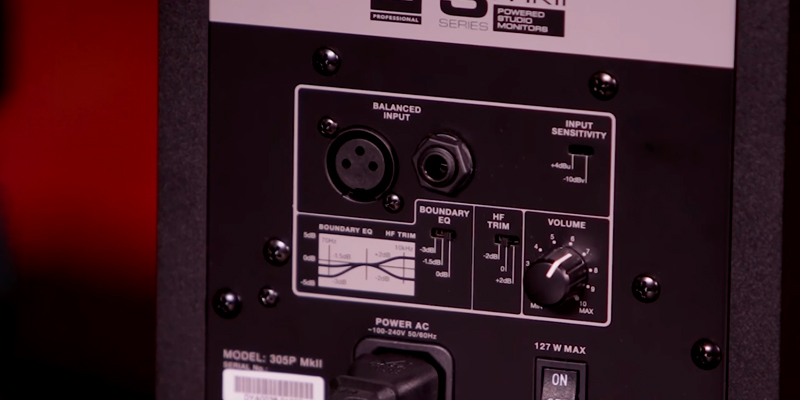
Additional Info
| Last updated price | $155.00 |
| Stock | In stock |
| ASIN | B077N2GQXC |
What customers say about this product
Key Specs
Size & Weight
Audio
Features
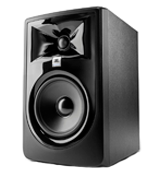
Pioneer DM40
Ultimate DJ Tool
One of the primary types of people who really benefit the most from a highly accurate studio monitor are DJs. Anyone who plays back and records audio records needs to have not only a good ear for the music and sounds that they are using, but also a high-quality monitor that can give them the ultimate in sound accuracy. Sound samples and effects are usually based principally on their unique sound, and having such high accuracy is extremely important for being able to create the right mix.
The Pioneer DM40 DJ Studio Monitor gives you a pair of studio monitors that give you the best in sound reproduction, yet at an affordable price to where any home DJ can afford them. These compact desktop monitors have the same sound accuracy and quality as the more expensive models geared towards professional studios, yet are small enough to fit on any desk, and are also quite portable, allowing any DJ on the move to bring high-quality sound output with them. What's more, the affordable price means that anyone who needs highly accurate sound for any number of purposes should be able to afford them, thus allowing even a casual audio lover to experience the same high fidelity in sound quality as any experienced audiophile.
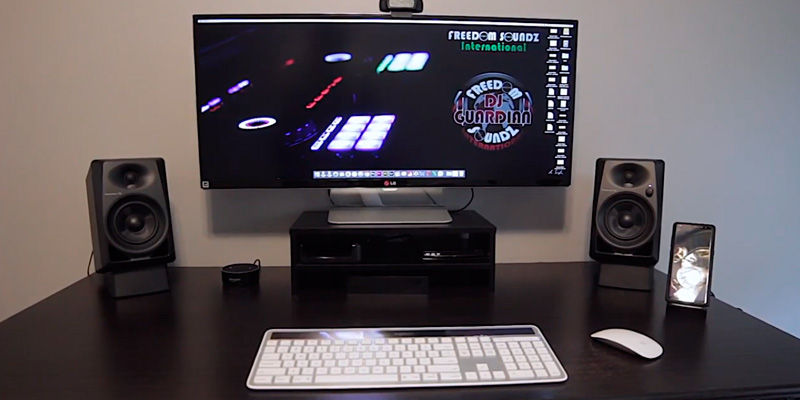
High Tech Design
Despite the affordable price of this studio monitor pair, no expense was spared in bringing the latest in high tech design to these speakers. They inherit the same high tech quality and design as Pioneer's professional series of monitors have, including the front loaded bass reflex system that gives rich, deep bass playback, along with the DECO technology that gives a wide reach and high frequency response. In fact, the pure audio fidelity produced by these desktop monitors belie the small footprint and overall compactness of the casing.
The casing of the monitors is a sleek black design that looks every bit as good as the speakers sound, and house the 3/4 inch soft dome tweeter and 4-inch cone subwoofer. The volume knob is located on the front of the left speaker, giving easy access to it, a feature that is sadly not often found on much more expensive models. The back of the monitor includes the interfaces, which include both stereo RCA jacks (although unbalanced), along with a 3.5mm mini jack input, which lets you easily connect almost any mobile device to use as the audio source. There is even a 3.5mm to RCA audio converter cable included, giving anyone the ability to connect these to almost any type of audio source. This affordable studio monitor pair is too good to pass up for anyone looking for the perfect speakers in this price range.
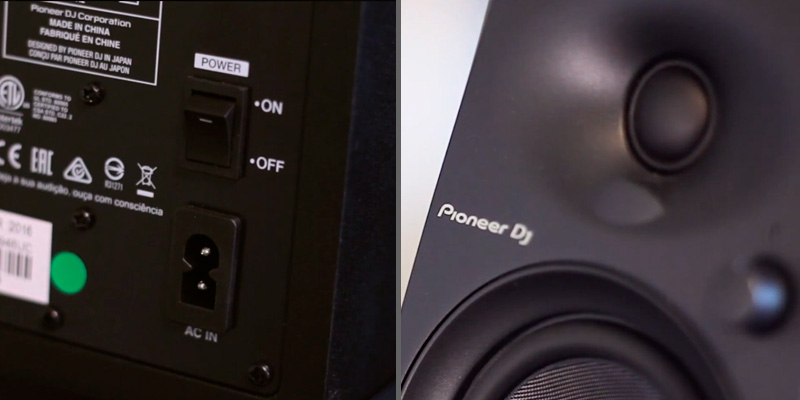
Additional Info
| Last updated price | $149.00 |
| Stock | In stock |
| ASIN | B01DW36BO0 |
What customers say about this product
Key Specs
Audio
Features
Size & Weight
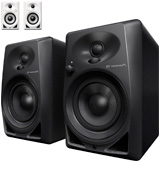
PreSonus Eris E3.5
Budget Monitors
The phrase "you get what you pay for" most often rings true, regardless of what it is you are buying. However, it is especially true for any type of audio gear, as any trained ear can definitely tell the difference between sound coming from a cheap pair of speakers from that produced by a professional studio monitor. The desire to hear accurate sound reproduction isn't simply limited to audio engineers. Almost anyone who has suffered through sound coming from cheap speakers can attest to how much more pleasing accurate sound reproduction is.
The PreSonus Eris E3.5 Studio Monitors bring high-quality and accurate sound reproduction to everyone who can afford a pair of speakers. This budget studio monitor produces crystal clear sound that is extremely faithful to the source, without any distortion or compression added to the mix. They are also extremely flexible, something often not found with budget monitors, and this flexibility makes them perfect for use in any situation, whether it be for listening to music, home theater enhancement, or even gaming. The small footprint also makes them perfect as desktop speakers, giving any computer user extremely high-quality sound reproduction.
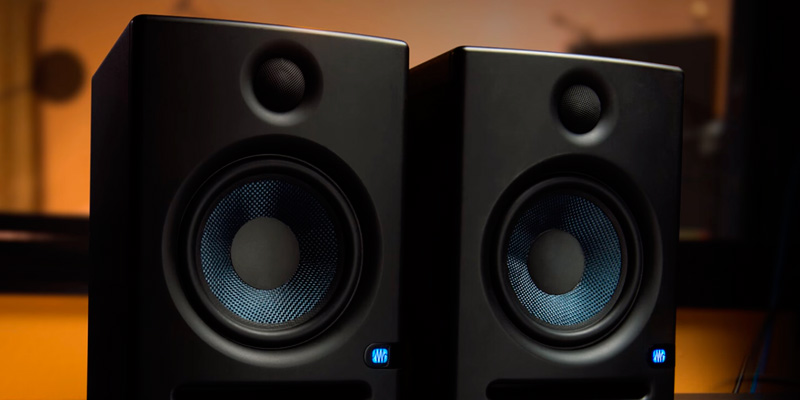
Studio Quality Sound at Home
The industrial design of these monitors is exceptional, giving the average home user access to studio quality without the high price. The casing is quite strong and durable, and provides protection from RF interference as well as from output-current limiting, over-temperature, and almost any other kind of interference imaginable. The speakers include a 3.5-inch woven composite driver that produces rich, powerful bass while retaining sound accuracy.
What is also great about this studio monitor is that it is the only model in its class with acoustic tuning. This gives you extremely clear sound quality in any environment, with a crossover frequency of 2.8 kHz. The back of the speakers include the speaker wire connectors, along with the dials for both high and low acoustic tuning, balanced TRS inputs, and unbalanced RCA inputs. The power switch and volume dial are both located on the front of the left speaker, giving easy access to both, making them perfect and simple to use in either a home or studio environment. What is best about this studio monitor, though, is that the high sound accuracy works great with almost any input source, ranging from televisions, computers, or even from professional studio equipment. Anyone looking for the ultimate budget studio monitor will certainly fall in love with this pair.
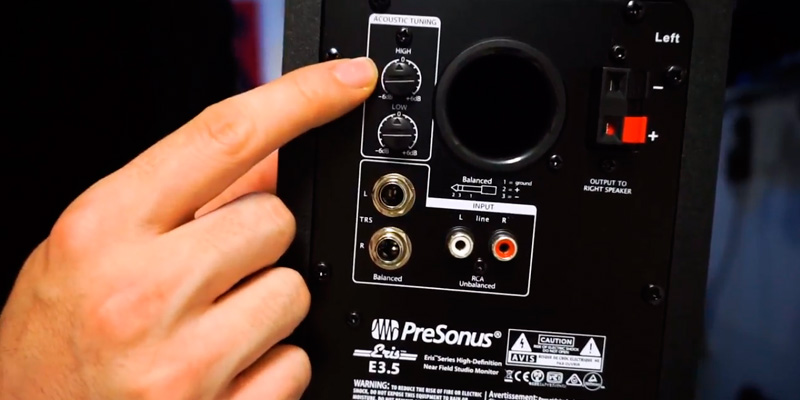
Additional Info
| Last updated price | $99.95 |
| Stock | In stock |
| ASIN | B075QVMBT9 |
What customers say about this product
Size & Weight
Key Specs
Audio
Features
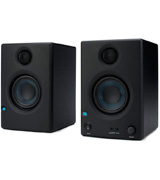
What Is a Studio Monitor?
Speakers are a part of most people's lives. Whether we're at home, driving in a car, sitting at work, or even out and about, there are speakers everywhere, meant to reproduce audio in one form or another. Most speakers are suitable enough for most people, but when it comes to professional audio engineers and studio recording artists, a standard speaker just isn't enough.
Most standard speakers do a good enough job of reproducing audio, but many consumer speakers have some limitations when it comes to the audio clarity. Often, they will have a limited frequency range, which means that certain sounds remain inaudible. Speakers may also not have frequency equalization balanced properly, which may distort the bass or treble that is reproduced, causing inaccurate sound reproduction.
The fix for this, of course, is to use a studio monitor. Studio monitors are special speakers that are engineered to reproduce audio at its most accurate level. This means that audio reproduction is exactly as it is heard from the source, whether it be from pre-recorded material, or live audio coming from a studio. This is especially important for those working in an audio studio, as audio engineers need accurately reproduced audio in order to work on an audio production. However, it can be equally important for a wide range of other purposes as well, even for just home audiophiles who want an accurate listening experience.
If you are just looking for speakers for your home entertainment needs and don't need a dedicated studio monitor, then take a look at our reviews of the best bookshelf speakers.
What Features to Compare
Studio monitors are all made for the specific purpose of providing the best and most accurate representation of audio from its source. However, not all studio monitors will work the same way, or provide as accurate of a sound as other models. They have a tendency to vary by brand, and even by model, with some being a bit better at their jobs than others. Even more, some may contain features that other models lack. Knowing which features and capabilities you need as well as which ones are offered will help a great deal in choosing the best studio monitor for your needs.
Frequency Range
One of the most important capabilities of a studio monitor is its frequency range (measured in Hz - Khz), which shows the level of frequencies that can be reproduced by the monitor. All audio that is produced is done at a specific frequency, which determines the pitch of the audio. Most studio monitors are made to work with a wide range of frequency, but even so, there are always limitations on the frequency range. Make sure that whichever model that you want to buy has the best frequency range possible.
Controls
Another important consideration about a studio monitor is in the controls offered on it. Many studio monitors may not have any controls, instead relying entirely on the audio source, but most will at least have volume controls, although many other types of controls are also typical, including HF and LF controls, Room Switch, Input Sensitivity, Boundary EQ, and others. If you require specific controls for your studio monitor, then make sure that the model that you get has the ones that you need.
Interfaces
The interfaces offered on a studio monitor can be just as important as anything else, as a studio monitor is no good if you can't connect anything to it. Most studio monitors will come with the standard XLR connectors, but some may include others, such as TRS or even RCA jacks. XLR connectors tend to be the most common by far, as they are the ones most often used in studio equipment, but having the other types of connectors is always a bonus, and may even be necessary for some people.
Extra Features
Finally, some other extra features may be of interest to those who are needing a studio monitor. The extra features provided by different studio monitors tend to vary greatly, with many being features of the case or speaker housing that ensure completely accurate audio reproduction. Some others may include specific controls for equalizers and other audio optimizations. If there are specific features that you want in your next studio monitor, then make sure you choose a model that has those features included.
Did you know?
Audio Terminology
Throughout both the reviews listed above and in the product pages of the studio monitors reviewed, there are a lot of specific terms related to audio technology that the average person may not be familiar with. Not knowing what most of these terms mean will probably hamper your understanding of what benefits and drawbacks that each studio monitor has, so it is a good idea to become more familiar with audio terminology before comparing the different models. Below are many of the most frequently used terms, along with explanations for what they mean, or what exactly they measure, depending on their use.
Amplifier - An electronic device that amplifies (strengthens) an electrical signal. Amplifiers are important components in speakers, as they ensure that the electrical current carrying the audio signal has enough strength to create clear, loud audio reproduction.
Balanced Audio - This term refers to audio signals that use special inverted voltages to prevent distortion or other unwanted noise from creeping into the audio signal. When audio ports are labeled as "balanced", this means that the circuitry for the ports contains this protection.
Decibel (dB) - This is a unit of measurement of an audio signal, often used to indicate volume. The higher the dB measurement, the stronger (or louder) the audio signal.
Equalization - The process of adjusting various frequencies in an audio signal in order to achieve the desired sound. Many studio monitors, as well as various audio equipment, include controls for adjusting the equalization of audio.
Frequency Response - Most audio devices carry a specific sensitivity to audio frequencies, meaning that even weak audio signals can be picked up and reproduced. The frequency response of a studio monitor indicates how high or low audio signals can be accurately reproduced. The larger the frequency response range of a monitor, the wider the range of audio it can reproduce.
Hertz / Kilohertz (Hz / kHz) - This is a measurement of a frequency measuring cycles per second, often used to indicate the frequency of an audio signal. Kilohertz is 1000 hertz.
Headroom - Strong audio signals can sometimes run the risk of damaging speakers when played at full strength. This term refers to the amount of "safety space" provided in speaker equipment that prevents this from happening, ensuring that the strongest audio signal provided by the device is always lower than the maximum strength that it can handle.
Mixer - An audio device that receives two or more separate audio signals and combines them into one audio output.
RCA - This term refers to connectors that were initially created by the company of the same name. These connectors are quite common on most home audio and video equipment, and consist of two separate connectors on each end, one for each stereo channel.
Reverberation - Often shortened to "Reverb", this indicates the propensity of sound waves to bounce off of different objects. Heavy reverberation can often cause distortion in audio reproduction, due to the analog nature of speakers and how they reproduce sound.
Stereo - Most audio that is created nowadays is done using two separate audio signals, meant for left and right speakers.
Transducer - This is a component in a device that converts a type of energy in another form. In studio monitors, it is the component that converts the electrical audio signal into a percussive energy that is used by the speakers to reproduce audio.
XLR - This is a type of industry standard connector that usually includes 3 pins, and is often used to connect audio equipment together. It is a lockable cable that is not easily detached from a jack.
Popular Comparisons
































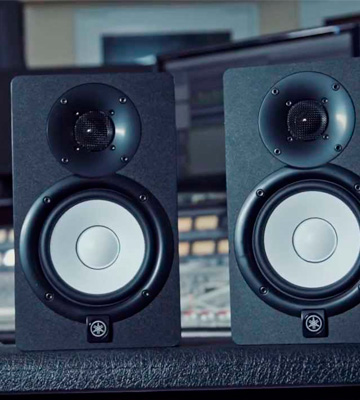
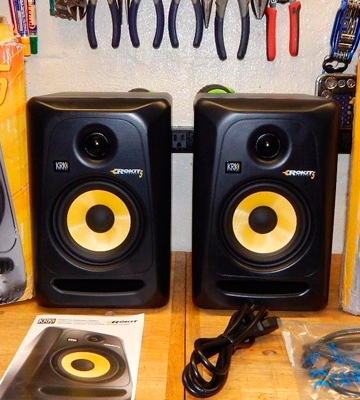
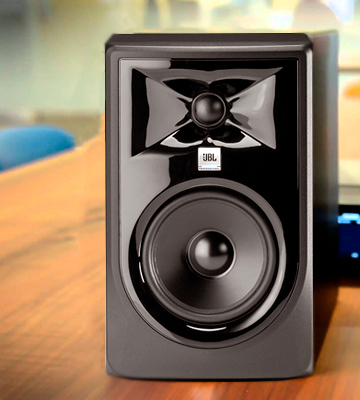
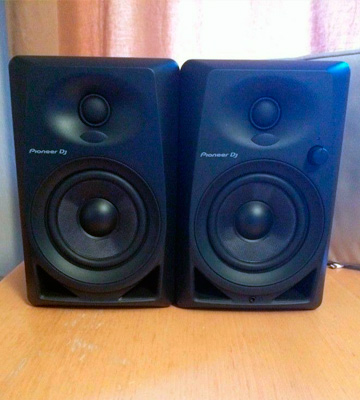
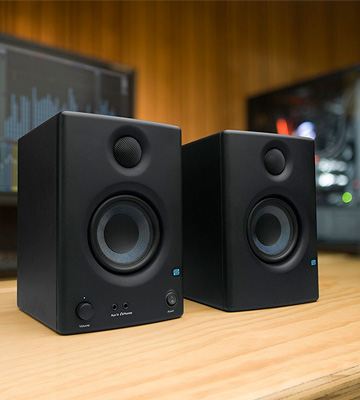
Your comment was successfully sent
Error! Please try again later